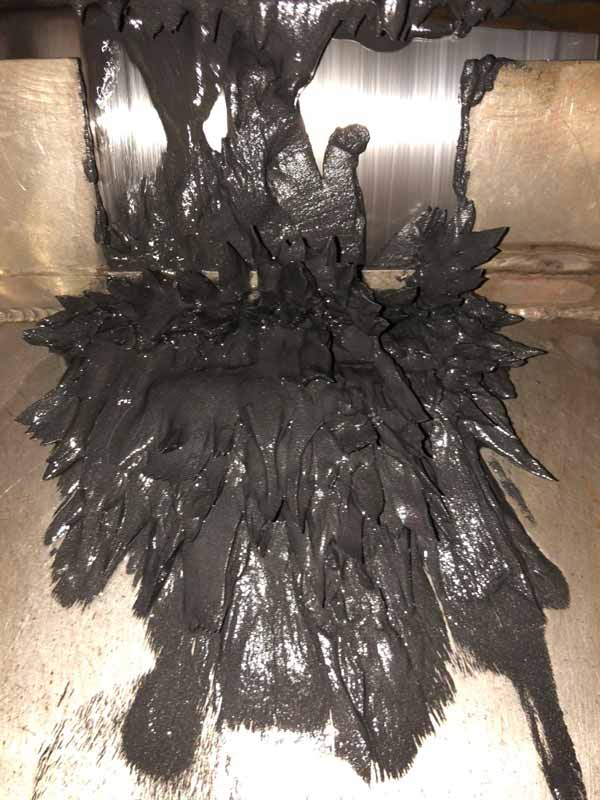Chinese shortages are good news for vanadium stocks like Technology Metals Aus

Pic: Tyler Stableford / Stone via Getty Images
Chinese interest in foreign vanadium producers is increasing as the Middle Kindgom’s crackdown on domestic pollution begins to take a toll on local mineral processing.
That’s good news for China’s population — and also good news for the handful of Australian vanadium developers.
A potential looming vanadium shortage was a key theme at the 2018 FerroAlloyNet International Vanadium Products Summit in Wuhan in central-eastern China this month.
China’s tough new Environmental Protection Tax Law which came into effect in January — along with the time and cost associated with acquiring permits — are limiting the ability of local vanadium miners to lift production in response to recent price increases. That’s keeping higher-cost swing producers on the sidelines.
A number of Chinese buyers are now sourcing vanadium from international suppliers — an indication of a move away from China’s vanadium self-sufficiency.
TMT is a direct beneficiary
That mean companies like Technology Metals Australia (ASX:TMT) — which is rapidly progressing its project towards close to production, are in prime position to fill that gap in China.
TMT’s main focus is its Gabanintha vanadium project in the mid-west region of Western Australia — said to be one of the highest-grade vanadium deposits in the world.
Gabanintha aims to supply high-quality vanadium to steel producers and the emerging market for vanadium redox batteries.
“Chinese shortages provide a fantastic opportunity for Australian vanadium developers, and therefore TMT, to progress the development of high quality projects such as our 100 per cent-owned Gabanintha Vanadium Project in a rising price environment where end-users are actively targeting stable long term supply,” director Ian Prentice told Stockhead.
Come June, Technology Metals will be one of only a few ASX-listed companies that will have completed a full pre-feasibility study on an Australian vanadium project, placing it ahead of the majority of its peers.

Technology Metals’ Gabanintha project has a consistent high-grade core of 55 million tonnes at 1.1 per cent vanadium pentoxide within a global resource of 119.9 million tonnes at 0.8 per cent vanadium pentoxide.
The company has proven it can achieve high recoveries of up to 97.2 per cent vanadium into solution using a conventional salt roast / water leach process that carries a much lower capital cost than other developing predominantly acid leach reliant processing options.
The company itself believes structural changes reducing supply have placed the industry on the cusp of a period of dramatic demand growth.
With prices rising due to battery and steel consumption, this means the margins for lower-cost vanadium developers are looking good.
- Bookmark this link for small cap breaking news
- Discuss small cap news in our Facebook group
- Follow us on Facebook or Twitter
- Subscribe to our daily newsletter
Price spikes
While 90 per cent of vanadium goes into the steel industry, a rapidly rising volume is being taken up by makers of vanadium redox flow batteries, which can store more power and last much longer than lithium batteries.
That demand — largely from China — has helped push the price of vanadium up 550 per cent in the past three years to more than $US14 per pound this year from a low of less than $US4 in early 2017.
Chinese government demands to increase the amount of vanadium in rebar steel has also been a major factor in price rises this year.
Chinese battery power
At the same time as the Chinese government’s environmental push is creating production bottlenecks, it’s also driving demand.
China is focusing increasingly on renewable energy sources backed by batteries — and vanadium redox batteries are rapidly taking a leading position in this market.
Rongke Power in Dalian province is building the largest battery in the world.

It’s a 800MWh VRFB and will need about 7000 tonnes of vanadium pentoxide.
It and Robert Friedland-chaired Pu Neng Energy of China are at the forefront of this push.
Data presented at the Wuhan conference indicated that global vanadium consumption in vanadium redox batteries and the chemical industry combined was 10 per cent of the total market in 2017.
That was up from 5 per cent in 2016.
That figure is expected to triple over the next three years.
This special report is brought to you by Technology Metals Australia.
This advice has been prepared without taking into account your objectives, financial situation or needs. You should, therefore, consider the appropriateness of the advice, in light of your own objectives, financial situation or needs, before acting on the advice.
If this advice relates to the acquisition, or possible acquisition, of a particular financial product, the recipient should obtain a disclosure document, a Product Disclosure Statement or an offer document (PDS) relating to the product and consider the PDS before making any decision about whether to acquire the product.
UNLOCK INSIGHTS
Discover the untold stories of emerging ASX stocks.
Daily news and expert analysis, it's free to subscribe.
By proceeding, you confirm you understand that we handle personal information in accordance with our Privacy Policy.








